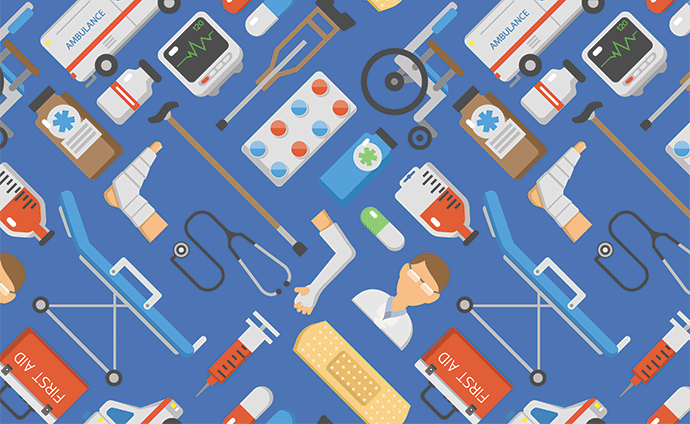CDC Urges Providers to Improve Asthma Care as Costs Soar to $81.9B
Healthcare stakeholders and providers should implement guideline-based care and self-management education to improve asthma care costs, CDC researchers stated.

Source: Thinkstock
- The annual costs of asthma care, including medical expenses, absenteeism, and mortality, cost the US economy $81.9 billion in 2013, researchers from the Centers for Disease Control and Prevention (CDC) recently reported.
And that value may be significantly underestimated because the analysis only included individuals who received treatment for the chronic condition during the study’s period, researchers added in the study published in the Annals of the American Thoracic Society.
The estimate also did not include non-medical costs, such as transportation, appointment wait time, time lost at work because of illness, and intangible suffering costs.
“The findings of the paper highlight the critical need to support and further strengthen asthma control strategies,” stated Tursynbek Nurmagambetov, PhD, the study’s lead author and Health Economist at the CDC. “In order to reduce asthma-related ER visits, hospitalizations, absenteeism and mortality, we need to support guidelines-based care, expand self-management education, and reduce environmental asthma triggers at homes.”
Approximately one in 12 people suffer from asthma, and that number has been on that rise, the most recent data from the CDC showed.
READ MORE: Good Data, Better Value-Based Care Can Boost Population Health
As the number of individuals with the chronic condition grows, so does the economic burden of asthma. The newest estimate from CDC researchers was nearly $26 billion more than the asthma cost estimate from 2007.
Asthma was responsible for medical expenses over twice the amount that non-asthma suffers incurred between 2008 and 2013, the study of Medicare Expenditure Panel Survey data showed. The total annual per-person incremental medical cost of asthma was $3,266 for the sample of 10,237 individuals who had treated asthma.
Prescription drug costs accounted for 56 percent of total costs, reaching $1,830 per-person with treated asthma.
Treated asthma patients spent another $640 on office-based visits, $176 on hospital-based outpatient visits, $176 on emergency department visits, and $529 on inpatient hospital admissions.
Asthma-related mortality also cost the US $29 billion each year, with the chronic condition resulting in 3,168 deaths on average.
READ MORE: Managing Healthcare Costs, Data Analytics Top C-Suite Priorities
Additionally, absenteeism from asthma contributed to $3 billion in costs per year, representing 8.7 million work days and 5.2 million school days missed due to the chronic condition.
Researchers noted that certain populations incurred significantly greater incremental medical expenses for asthma care. While the entire population with treated asthma had an average of $3,266 in medical spending, the average medical expenses for women was $3,322, $3,424 for high school graduates, and $3,453 for Medicaid beneficiaries.
However, uninsured individuals had lower average incremental costs during the period. Uninsured asthma suffers had average medical expenses of $2,145.
Individuals with asthma but no health insurance may have lower average medical expenses because they paid out-of-pocket or limited their care compared to the general population of individuals with asthma.
Black and Hispanic individuals also reported lower average costs than the population average. The average medical expense was $3,145 for black patients and $2,905 for Hispanic patients.
READ MORE: Creating a Population Health Management Operating Model
“Multiple studies demonstrated that these groups have consistently higher rates of hospitalizations and ER visits associated with asthma but lower rates of asthma prescription medication and outpatient visits,” researchers explained. “This may explain their lower total medical cost of asthma, since prescription medications and outpatient visits are the two largest contributors to total medical care costs.”
With prescription medications and office-based visits representing the majority of asthma care costs, researchers suggested that healthcare stakeholders and providers prioritize increasing guideline-based care and self-management education.
Asthma care and self-management education can not only reduce healthcare costs, but also unnecessary resource use. An asthma education initiative at Ellis Hospital in New York reduced emergency department and inpatient use in the 12 months after implementation, resulting in $600,000 and $230,000 in savings, respectively.
The hospital partnered asthma patients with a respiratory specialist to engage in 10 hours of asthma management education over six months. Patients also completed asthma knowledge questionnaires and asthma control tests at follow-up visits. Providers gave patients supplemental information if necessary.
Improving access to asthma care also allowed a clinic system in California to improve asthma management while realizing a return on investment. Harbor-University of California, Los Angeles Medical Center partnered with the Los Angeles County+University of Southern California Medical Center to create a stationary asthma management program.
The organizations established a fixed asthma-specific clinic that employed an allergy-immunology specialist, two nursing/asthma educators, and a medical technician who coordinated appointments. The providers followed care guidelines and the clinic opened a half-day per week.
Under the program, 50 percent of mild persistent patients achieved asthma control by the second visit and 70 percent achieved control by the third visit. By the sixth visit, 97 percent of patients with mild persistent asthma and 90 percent of those with moderate to severe persistent asthma achieved disease control.
Emergency department and urgent care use also fell by 69 percent and hospitalizations declined by 92 percent.
The clinic system saw a return on investment because the total cost of running the clinic was just $192 per half day.
CDC researchers intend for their research to prompt providers and other stakeholders to reduce the economic burden of asthma through better guideline-based care and self-management initiatives, like educational programs and improved care access models.
“The cost of asthma is one of the most important measures of the burden of the disease,” said Nurmagambetov. “Cost studies can influence health policy decisions and help decision makers understand the scale, seriousness and implications of asthma, so that resources can be identified to improve disease management and reduce the burden of asthma.”
